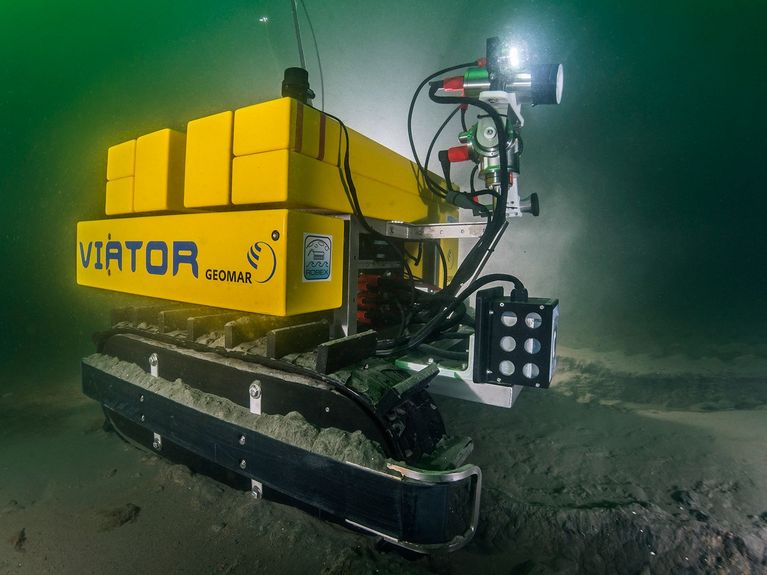
Story #30
Robots for the Moon and Ocean Floor: Anything But Ordinary
Extreme conditions call for extreme solutions – and our experts for marine, polar and space research are well-versed with both. In the ROBEX alliance, they join forces to develop robots for space and the deep sea.
Whichever way you turn, there’s nothing but darkness, silence and cold – in the void of space and in the deep sea, we humans reach our limits. Without technology, we simply can’t explore these extreme worlds. Robots perform work in places where we could never survive – on the ocean floor, in the polar regions, and in space – making them the ideal partners for outstanding research under extreme conditions.
When it comes to developing robotic systems, the experts at our research centers pay equal consideration to the various extreme environments involved – e.g. through the ROBEX (Robotic Exploration of Extreme Environments) alliance, founded in 2012 and coordinated by the Alfred Wegener Institute (AWI). The alliance developed autonomous robots with a diverse range of capabilities, which can be used in space and deep-sea, but also disaster response contexts.
To make that happen, various Helmholtz research centers pooled their expertise. For instance, the GEOMAR Helmholtz Centre for Ocean Research in Kiel developed MANSIO-VIATOR: The VIATOR crawler can independently map the ocean floor, gather data, and return to the MANSIO station to recharge its batteries and transfer data, allowing it to work underwater for days on end. Other robots were equipped with high-precision manipulator arms for collecting samples or sensors for soil analysis. A manta ray-like deep-sea glider (from MARUM Bremen) was developed for mapping the seafloor, as well as unmanned drones for Arctic exploration. The devices were tested in two extreme worlds: the volcano Mount Etna, which served as a model for conditions on the moon, and in the Arctic Ocean as a test field for underwater robotic systems.
ROBEX Tiefseeforschung auf Polarstern
In ARCHES (Autonomous Robotic Networks to Help Modern Societies), another future-oriented project at Helmholtz, the focus is on networked autonomous systems: In 2020, a monitoring grid consisting of seven platforms was set up in Eckernförde Bay – as a model for environmental monitoring or monitoring deep-sea mining operations. And in 2022, various types of robots worked as a team at Mount Etna, just as they could in future missions on distant planets.
In iFOODis (Improving the sustainability of food cycles through (robotic) systems), coordinated by the German Aerospace Center (DLR), robotic solutions are now being used for environmental analyses of coastal regions: Here, robotic systems combine data from the air, water and soil with satellite imagery to identify nutrient contaminations and environmental changes and provide concrete recommendations for responding to them.
But the potential of robotics has hardly been exhausted. The projects to date have demonstrated that autonomous systems are capable of efficiently gathering large amounts of data, flexibly adapting to extreme conditions, and operating in tandem. The task now is to make them even tougher, smarter, and deployable on a larger scale.
Whether for monitoring the ocean floor or preparing for space missions – the experts at our research centers are working together to push the envelope of what’s possible. As such, the Helmholtz alliance ROBEX has laid the groundwork for unmanned planetary exploration and more comprehensive ocean monitoring alike. After all, whether it’s perpetual darkness, crushing pressures, or a total lack of infrastructure – the challenges posed by these extreme worlds are more similar than you might think.
Picture: Uli Kunz/Submaris